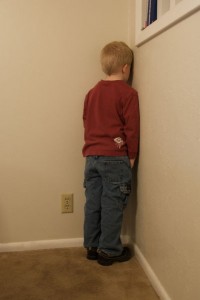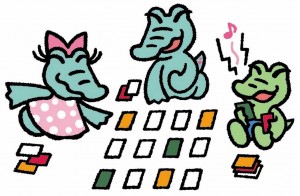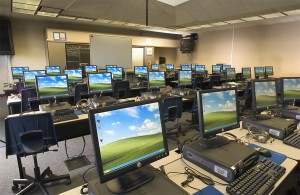Be Nice curriculum EFL eikaiwa ES expectations junior high school kids language courses Language learning school management Teach Like a Champion teaching
by sendaiben
2 comments
Zero tolerance
I’m normally a fairly laid-back guy, and I am probably a ‘nice’ teacher. I see my role as being a coach, someone who can provide training, encouragement, and advice to my students so they can learn the skills of English. At university, I set clear (high) expectations and show my students how to meet them.
In children’s classes though, something wasn’t right.
I’ve been reading a lot recently. Kindle on a phone makes reading anywhere, anytime a breeze. I think I have probably more than doubled the number of books I read since I got it.
Two standouts: Teach like a Champion, which I have talked about before, and more recently Work Hard, Be Nice (about the Knowledge Is Power Program in the US).
Both of them talk about high-energy, high-expectation, zero-tolerance classrooms. I don’t have big problems with discipline in my classes, but they could definitely be better, and perhaps the techniques in these books could help me…
I want my classes to be exciting, the students to be motivated and enthusiastic, and the results to be spectacular. I have some students who end up amazing users of English, and some that don’t, but I think it is possible to increase the numbers of those that do.
Recently I have been experimenting with a two-pronged approach:
1. keep the students busy with achievable, interesting activities
2. firmly jump on any form of undesired student behaviour immediately
Examples of undesirable behaviour: hitting, verbal attacks on teachers or other students, moving around without permission, talking about things not germane to the lesson, playing with pencils or other objects, not singing, not participating in speaking activities, not doing homework, not following instructions, etc.
So far it is going really well. I think students like to know what is expected of them and what they should be doing. Being firm in enforcing the rules allows the students who are into the lessons to enjoy them more, and makes life easier for the teacher. The flipside, of course, as alluded to in number 1 above, is that it is also essential to keep students challenged and busy in class.
I am going to continue with my ‘firm teacher’ experiment and see how the students progress. I’m very excited to see how the classes go over the next few months until March.
curriculum EFL eikaiwa ES expectations kids language courses
by sendaiben
leave a comment
Pair vocabulary activity
Class: children’s eikaiwa
Students: four seven-year-olds (experience of learning English 6 months-2 years)
I was teaching a group of first year elementary school age students a couple of days ago, and stumbled upon a wonderful activity that really gave me a boost.
We were practicing insect names again (for the third time), and the students were getting quite good. Each student had gaps, but as a group they could name all of them. I had two sets of small flashcards, so I had put one set in front of each pair of students. I started out calling out the names and having the students touch the pictures, but then realised I could have them work in pairs, one student being the ‘teacher’ and calling out words and the other being the ‘student’ and touching the pictures.
This is in no way a new activity, but the way my students took to it blew me away, and made me realise they are capable of much more than I was giving them credit for.
They not only did the activity perfectly, calling out and touching the appropriate pictures, but also became real teachers: helping their ‘students’ if they didn’t know the word, giving hints, waiting long enough to give their partner a chance to answer but not so long that they would get frustrated before helping…
Those seven-year-olds showed me that they are not just capable of taking on more active roles in their English lessons, but want to.
One of my goals for the rest of the year and for next year is to bring more realia, more content, and more personalisation into my classes. Giving the students a wider variety of roles in class will clearly need to be a part of this.
It’s very exciting to look at my classes and see where they can be improved: this year has been much more enjoyable since I started my self-improvement project. How about you: have you noticed anything about your classes recently?
conference curriculum EFL expectations extensive reading language courses Language learning presentations teaching university video
by sendaiben
2 comments
Extensive Reading presentation in Japanese
This presentation is from the ER Seminar held in Nagoya on July 1st, 2012. It is a short (25 minute) presentation in Japanese about how to design and introduce an extensive reading program.
curriculum expectations language courses materials personal teaching
by sendaiben
2 comments
End of term/semester
I just finished my grading for this semester. It’s nice to be done with classes, and time to start looking ahead to the next semester.
Here are some changes I’m planning to make:
- Make my computer class more interactive. This semester was my first teaching in a computer lab, and the strange environment threw me. Now that I am more used to it, I am going to try to involve the students more in talking to each other.
- Create a workbook for extensive reading classes (this is a team project). Our extensive reading classes are going really well, but we’re hoping that a bilingual workbook/briefing will make things much smoother at the start and allow teachers to run their classes more easily.
- Start using a new textbook for my presentation classes. I used to use Speaking of Speech New Edition (Harrington and Lebeau) but while useful it is a bit simple and childish for my students. It was a good match when I was starting out teaching presentation, but I think I have outgrown it now. We’ll be using Presentations in English (Williams) instead.
This is my fourth year here, so I have established routines and am fairly comfortable. There is always room to tweak and improve though.
How about you, what are you going to change next time round?
curriculum EFL expectations language courses Language learning online resources teaching technology university
by sendaiben
5 comments
Independent study in a computer lab (my steep learning curve starts here!)
I started teaching in a computer lab for the first time this semester. It’s been a bit traumatic so far, as the classroom dynamic changes a lot, but I’m enjoying the challenge so far.
Yesterday we had our first proper class, and I decided to run it as an independent study session to allow students to familiarize themselves with some useful online tools. There were 35 2nd-year non-English majors in the class, and their English ability and familiarity with computers varied wildly. You can see my lesson briefing on my teaching blog here.
The lesson was partly successful, but I can see how to make it better and was very excited by the potential of using a blog or website to communicate with students. Here are my major impressions of the class:
- I tried to do far too much. None of the students had enough time to finish, and that was very harmful to the classroom atmosphere and their feelings towards the course. This is the #1 thing I would change about the lesson
- Only a couple of students asked questions/for help. Need to spend more time getting the class comfortable with calling me over to help with problems
- Unforeseen technical problems reared their ugly heads: the NY Times website does not allow popjisyo to load individual articles (something I only noticed when a student pointed it out) and the edublogs comment feature is a bit too aggressive in its attempts to deter spambots. Both of these caused a lot of frustration to my students



